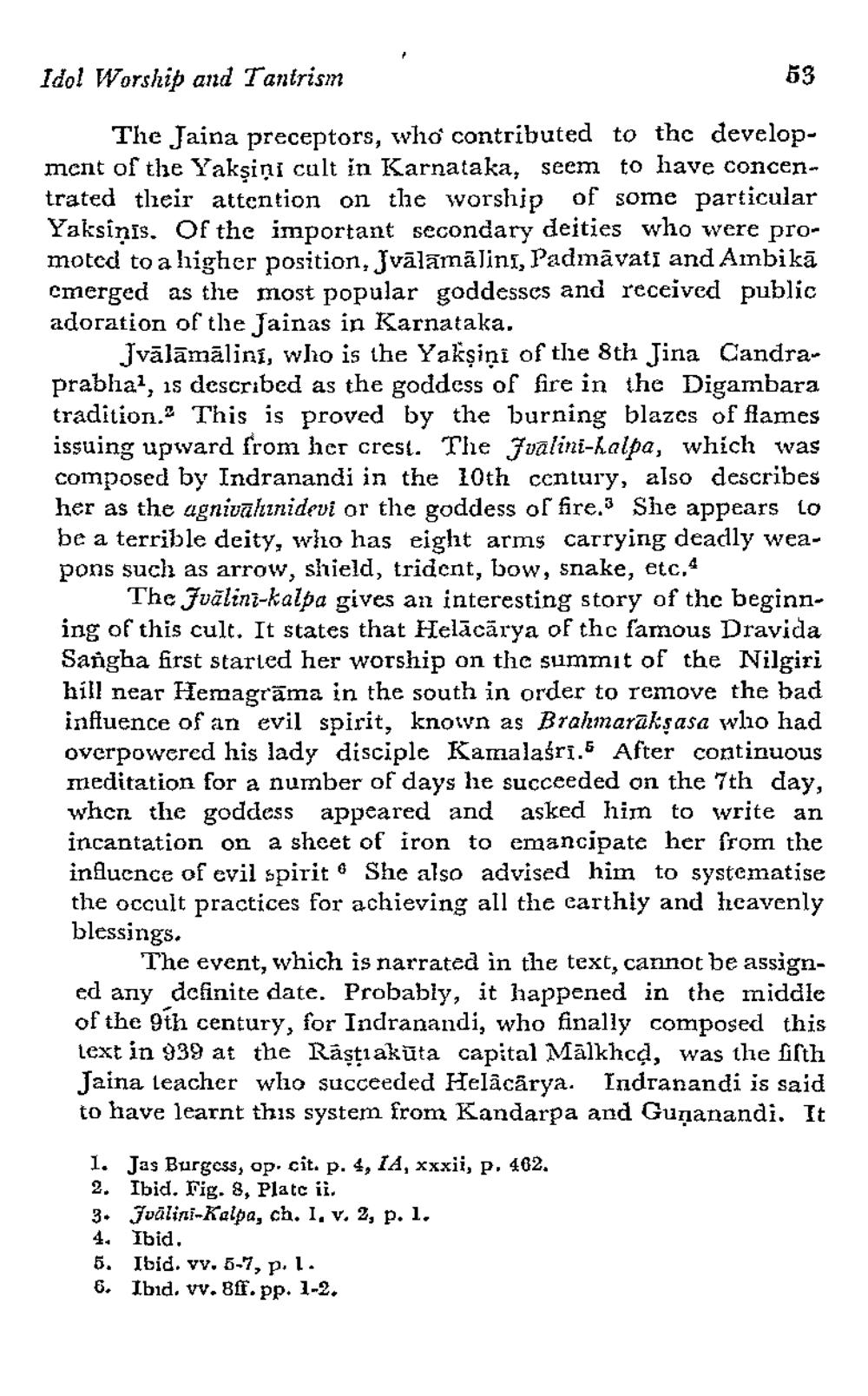________________
Idol Worship and Tantrism
53
The Jaina preceptors, who contributed to the development of the Yakşiņi cult in Karnataka, seem to have concentrated their attention on the worship of some particular Yaksinīs. Of the important secondary deities who were promoted to a higher position, Jvālāmālini, Padmāvati and Ainbikā emerged as the most popular goddesses and received public adoration of the fainas in Karnataka.
Jvālāmālini, who is the Yakşini of the 8th Jina Candraprabhial, is described as the goddess of fire in the Digambara tradition. This is proved by the burning blazes of flames issuing upward from her crest. The Jvalini-halpa, which was composed by Indranandi in the 10th century, also describes her as the agnivahinidevi or the goddess of fire.3 She appears to be a terrible deity, who has eight arms carrying deadly weapons such as arrow, shield, trident, bow, snake, etc.4
The Jvälinz-kalpa gives an interesting story of the beginning of this cult. It states that Helācārya of thc famous Dravida Sangha first started her worship on the summit of the Nilgiri hill near Hemagrāma in the south in order to remove the bad influence of an evil spirit, known as Brahmaraksasa who had overpowered his lady disciple Kamalasri.5 After continuous meditation for a number of days he succeeded on the 7th day, when the goddess appeared and asked him to write an incantation on a sheet of iron to emancipate her from the influence of evil spirit & She also advised him to systematise the occult practices for achieving all the carthly and heavenly blessings.
The event, which is narrated in the text, cannot be assigned any definite date. Probably, it happened in the middle of the 9th century, for Indranandi, who finally composed this text in 939 at the Räsțiakūta capital Mālkhcd, was the fifth Jaina teacher who succeeded Helācārya. Indranandi is said to have learnt this system from Kandarpa and Gusanandi. It
1. Jas Burgess, op. cit. p. 4, IA, xxxii, p. 402. 2. Ibid. Fig. 8, Platc ii. 3. Juālini-Kaloa, ch. 1, v. 2, p. 1. 4. Ibid. 5. Ibid. vv. 5-7, p. I. 6. Ibid. vv.sff. pp. 1-2.




